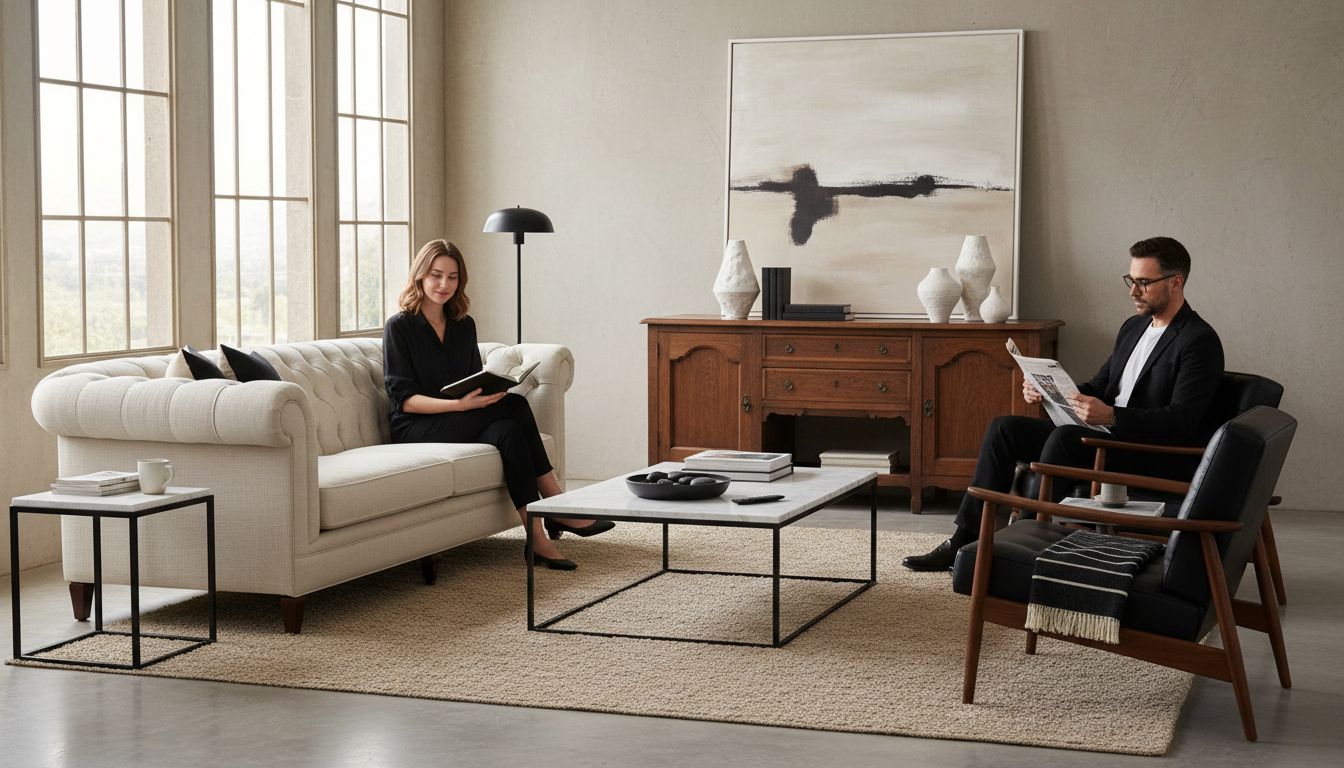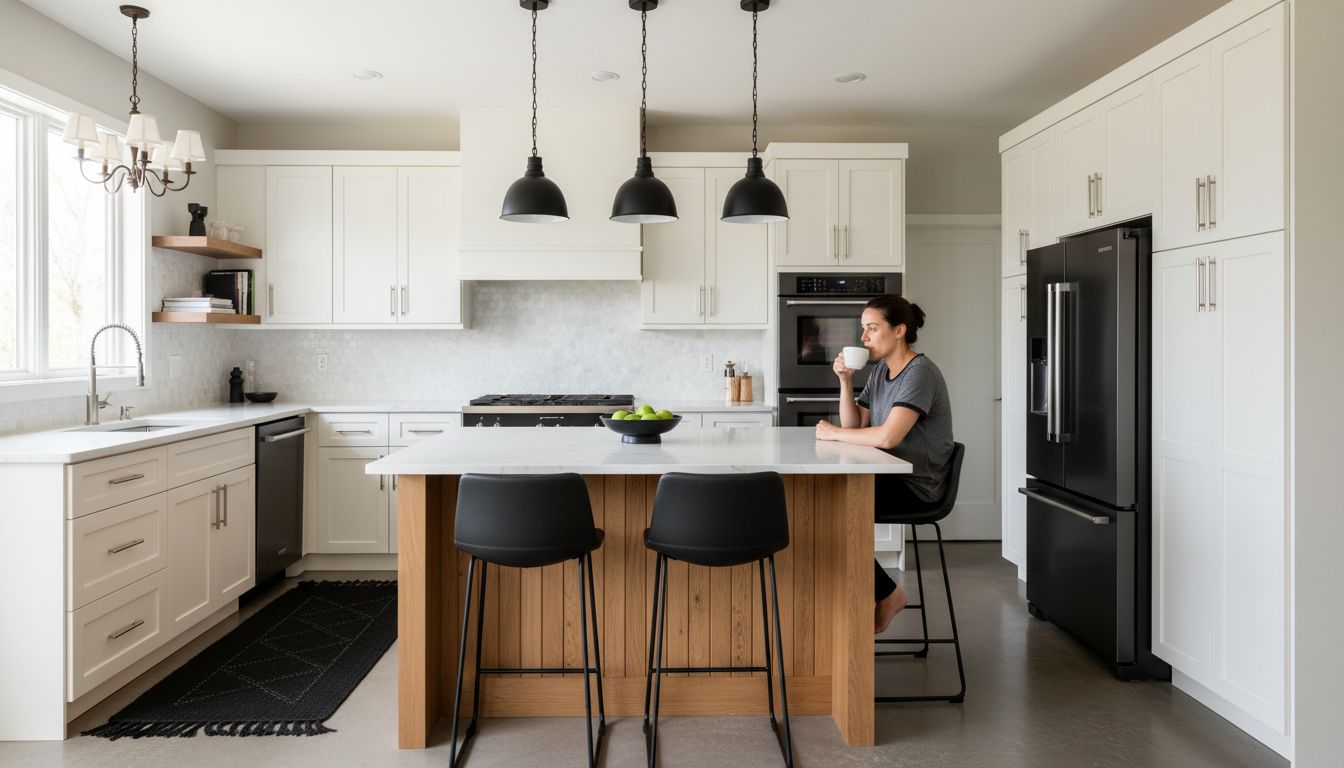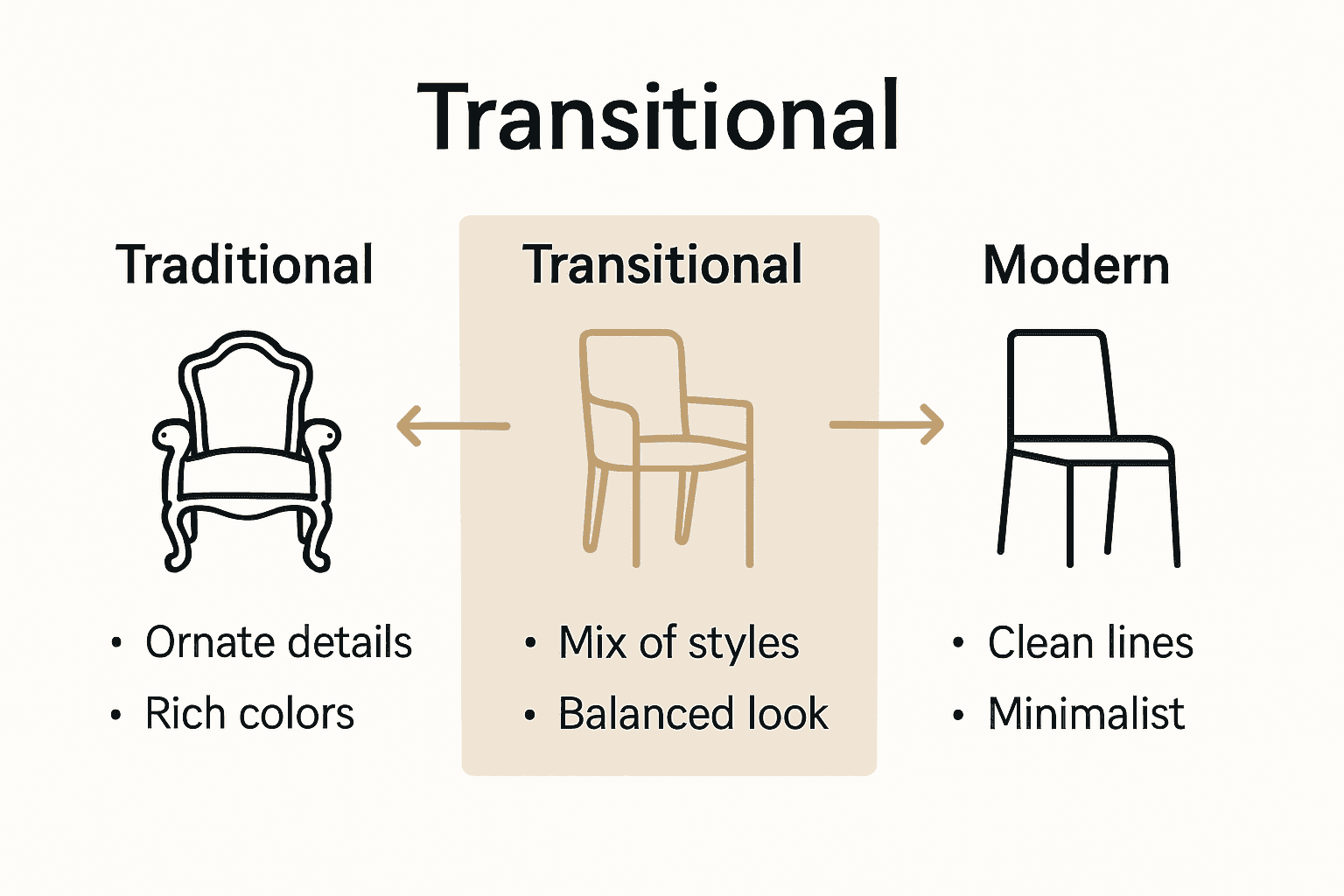Transitional Design: Everything You Need to Know
- demoore5506
- 21 hours ago
- 7 min read

More than 60 percent of american homeowners want a living space that feels both classic and up to date. Achieving this balance can be tricky when style trends shift so quickly. Transitional design offers a fresh take by fusing traditional warmth with modern simplicity, creating interiors that feel inviting yet current. Discover how this versatile approach makes it easy to create rooms that reflect your style while remaining adaptable for years to come.
Table of Contents
Key Takeaways
Point | Details |
Transitional Design | This design style bridges traditional and contemporary aesthetics, creating timeless yet modern interiors. |
Key Characteristics | Features include neutral color palettes, a mix of furniture lines, and an emphasis on comfort and functionality. |
Versatility and Adaptability | Transitional design allows for personal expression while adapting to evolving tastes and lifestyle needs. |
Cost Considerations | It offers flexible budgets, enabling homeowners to gradually build their space with quality materials over time. |
What Is Transitional Design in Interiors
Transitional design is an elegant interior design approach that masterfully bridges the gap between traditional and contemporary aesthetics. According to MasterClass, this design style emerged in the 1950s as designers sought to create spaces that harmonize classic appeal with modern sensibilities. The result is an interior environment that feels simultaneously timeless and refreshingly current.
At its core, transitional design represents a sophisticated balance between ornate traditional elements and sleek contemporary lines. As Harris at Home explains, this style combines the warmth of classic furnishings with the clean, minimalist approach of modern décor. The magic of transitional design lies in its ability to create versatile spaces that can adapt to evolving tastes and practical lifestyle needs.
Key characteristics of transitional design include:
Neutral color palettes with subtle, sophisticated tones
A mix of curved and straight furniture lines
Minimal decorative accessories
High-quality, textural materials like leather, wood, and metal
Emphasis on comfort and functionality
By blending different design eras and styles, transitional interiors offer homeowners a unique opportunity to create spaces that feel both familiar and innovative. Unlike strictly traditional or ultra-modern designs, this approach provides flexibility, allowing personal touches and individual expression while maintaining a cohesive and elegant overall aesthetic.
Defining Features of Transitional Style Homes
Transitional style homes are distinguished by their unique ability to create harmonious spaces that seamlessly blend traditional and contemporary design elements. According to MasterClass, these homes feature a carefully curated approach that includes neutral color palettes like beige, taupe, white, and tan, with a singular focal point that maintains a minimalist aesthetic.
One of the most compelling aspects of transitional style homes is their sophisticated material composition. As Harris at Home notes, these interiors masterfully combine a variety of textures and furnishings that bridge classic and modern design. This approach typically involves mixing elements such as:
Antique wooden furniture paired with modern metal accents
Glass and metal decor complementing traditional architectural features
Classic furniture shapes with contemporary upholstery
Minimal yet purposeful decorative elements
Color and texture play crucial roles in defining transitional style. The color palette remains intentionally subdued, allowing the interplay of design elements to take center stage. Soft, neutral tones create a calming backdrop that enables statement pieces to shine without overwhelming the space. Textures are thoughtfully layered, with smooth surfaces balanced against more tactile materials like leather, wool, and natural woods.

Ultimately, transitional style homes are about creating flexible, timeless environments that reflect both heritage and innovation. By carefully balancing old and new, these spaces offer a sophisticated alternative to strictly traditional or ultra-modern designs, providing homeowners with an approach that can elegantly adapt to changing tastes and lifestyle needs.
Transitional Design vs. Modern and Traditional
Transitional design emerges as a sophisticated design philosophy that artfully navigates the aesthetic boundaries between traditional and modern styles. According to MasterClass, this approach thoughtfully mixes traditional and modern styles to create contemporary spaces with timeless design elements, distinguishing itself from both purely traditional and strictly modern approaches.
At its core, transitional design represents a nuanced balance that differs significantly from its design counterparts. Traditional design typically features ornate furniture with intricate details, rich wood tones, and classic patterns, while modern design embraces minimalism, clean lines, and a “less is more” philosophy. Transitional design, by contrast, creates a harmonious middle ground that respects both aesthetic traditions while introducing fresh, adaptive elements.
Key differences between design styles include:
Traditional Design: Ornate details, heavy wooden furniture, complex patterns
Modern Design: Minimalist approach, straight lines, sparse decoration
Transitional Design: Balanced blend of curved and straight lines, neutral color palette, mix of textures
As Harris at Home explains, transitional style brilliantly bridges the gap between heirloom pieces and contemporary investments. This approach allows homeowners to honor family traditions while simultaneously embracing current design trends. The result is a living space that feels both deeply personal and refreshingly current, capable of evolving with changing tastes and lifestyle needs.
Popular Transitional Design Elements for Kitchens
Transitional kitchen design represents a sophisticated approach to creating functional and visually appealing cooking spaces that seamlessly blend traditional charm with contemporary aesthetics. According to MasterClass, these kitchens typically feature neutral color palettes like beige, taupe, white, and tan, establishing a calm and versatile foundation for design elements that can evolve over time.
The hallmark of transitional kitchen design lies in its masterful combination of materials and textures. Key elements include:
Classic cabinetry with sleek, minimalist hardware
A mix of wooden and metal surfaces
Smooth countertops in neutral tones
Subtle texture variations
Balanced blend of curved and straight lines
As Harris at Home notes, these kitchens create timeless and functional spaces by carefully combining traditional and modern elements. This approach allows homeowners to integrate classic design principles with contemporary functionality. When selecting elements, focus on creating visual harmony through complementary materials and a restrained color palette.
For those looking to explore contemporary kitchen design trends further, check out our Top Modern Kitchen Cabinet Trends for 2025 article. The key to successful transitional kitchen design is maintaining a delicate balance that honors both traditional craftsmanship and modern innovation, resulting in a space that feels both familiar and refreshingly contemporary.

Benefits, Challenges, and Cost Considerations
Transitional design offers homeowners a unique approach to interior styling that balances aesthetic flexibility with practical considerations. According to MasterClass, this design philosophy provides remarkable benefits, including a timeless appeal that allows homeowners to blend traditional and modern elements to suit their evolving tastes and personal style preferences.
The key benefits of transitional design include:
Exceptional design versatility
Long-term aesthetic relevance
Ability to incorporate family heirlooms
Adaptable to changing lifestyle needs
Potential for cost-effective updates
As Harris at Home explains, this design approach bridges the gap between ornate heirloom pieces and sleek new investments, ensuring longevity and relevance. However, achieving a balanced design is not without challenges. Homeowners must carefully select elements to avoid a disjointed or conflicting aesthetic, which requires a nuanced understanding of design principles and a keen eye for complementary styles.
For those considering 7 Timeless Kitchen Color Schemes for Your Home, cost considerations remain a critical factor. While transitional design can accommodate various budget levels, the expense can vary significantly depending on the quality of materials and the extent of design integration. The beauty of this approach lies in its flexibility - you can start with a few key pieces and gradually build your space, making it an accessible option for homeowners with evolving design aspirations.
Elevate Your Kitchen with Timeless Transitional Design
Transitional design thrives on blending classic warmth with modern simplicity creating an inviting space that lasts through changing trends. If you want to achieve that perfect balance in your kitchen without the chaos and cost of a full renovation focusing on cabinet refinishing can be a game changer. Many homeowners struggle to find affordable solutions that preserve their kitchen layout while upgrading the look and feel to something both elegant and current. This is where professional cabinet painting comes in offering a seamless way to refresh your cabinetry’s style and texture aligning perfectly with transitional ideals like neutral palettes and mixed materials.
At Ottawa Cabinet Painting we specialize in transforming traditional cabinets into stunning modern focal points using meticulous prep work and premium finishes that deliver durability and smooth elegance. Our process helps you maintain a warm functional heart of the home while embracing the timeless appeal of transitional design. Don’t let the fear of disruption or expense keep your kitchen stuck in the past. Discover how blending heritage and innovation starts with your cabinets by visiting Ottawa Cabinet Painting. Ready to refresh your kitchen’s soul? Contact us now for a consultation and take the first step toward a beautiful space that adapts effortlessly with your lifestyle.
Frequently Asked Questions
What is transitional design in interiors?
Transitional design is an interior design style that blends traditional and contemporary aesthetics, creating spaces that are both timeless and modern. It combines classic appeal with modern sensibilities, featuring a balance of ornate details and sleek lines.
What are the key characteristics of transitional style homes?
Key characteristics of transitional style homes include neutral color palettes, a mix of curved and straight furniture lines, minimal decorative accessories, high-quality materials, and an emphasis on comfort and functionality.
How does transitional design differ from traditional and modern design?
Transitional design differs from traditional design, which features ornate furniture and rich wood tones, and modern design, which embraces minimalism and clean lines. Transitional design creates a harmonious blend of both styles, offering a balanced approach that respects traditional aesthetics while introducing contemporary elements.
What are some popular transitional design elements for kitchens?
Popular transitional design elements for kitchens include classic cabinetry with minimalist hardware, a mix of wooden and metal surfaces, smooth countertops in neutral tones, and a balanced blend of curvy and straight lines to create a functional and aesthetically pleasing cooking space.
Recommended
Comments